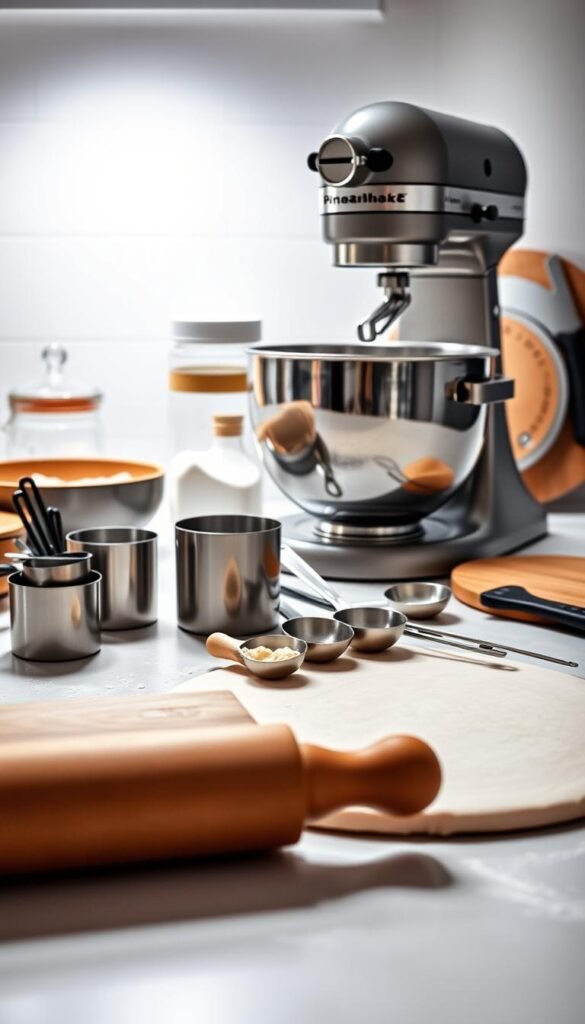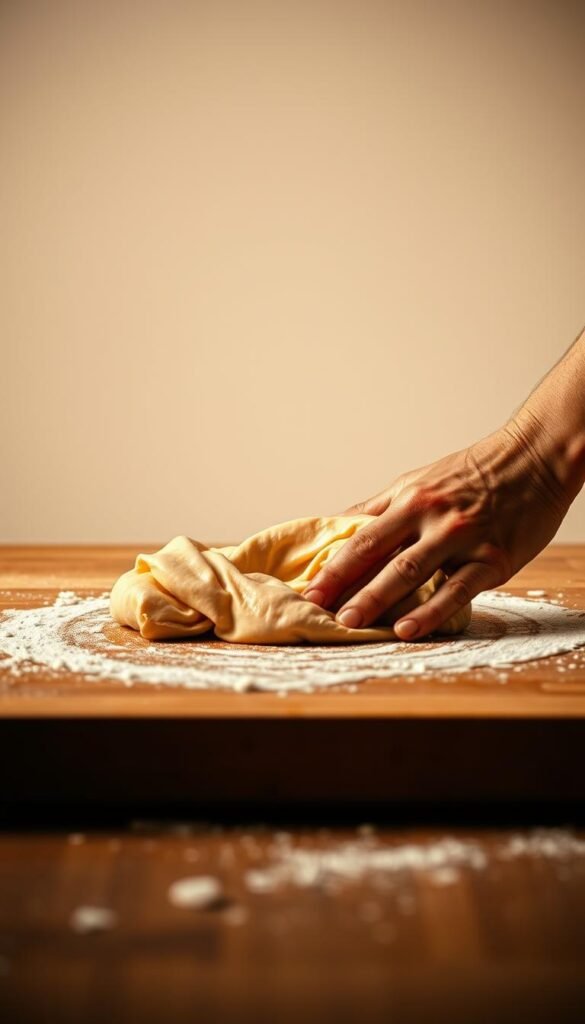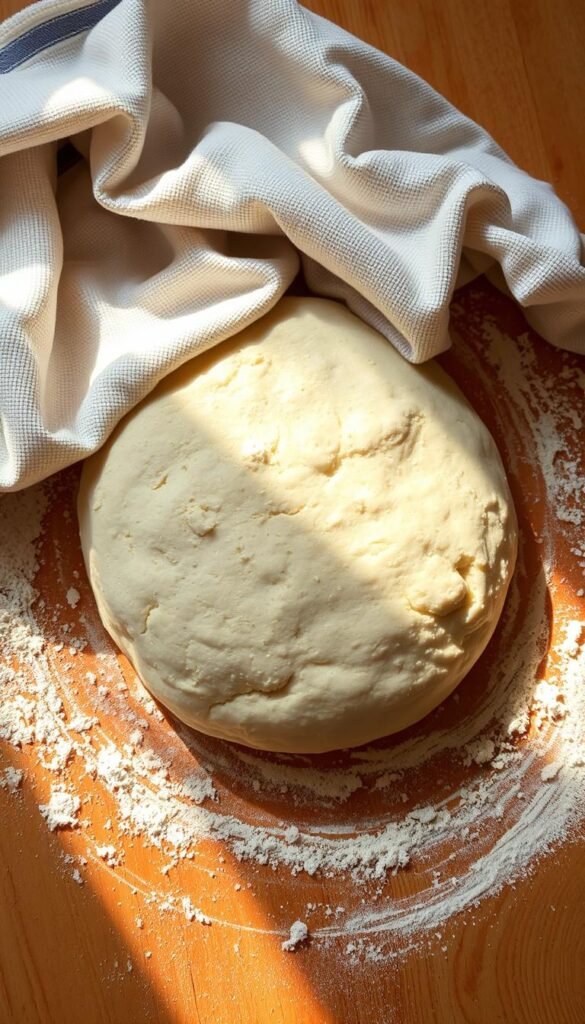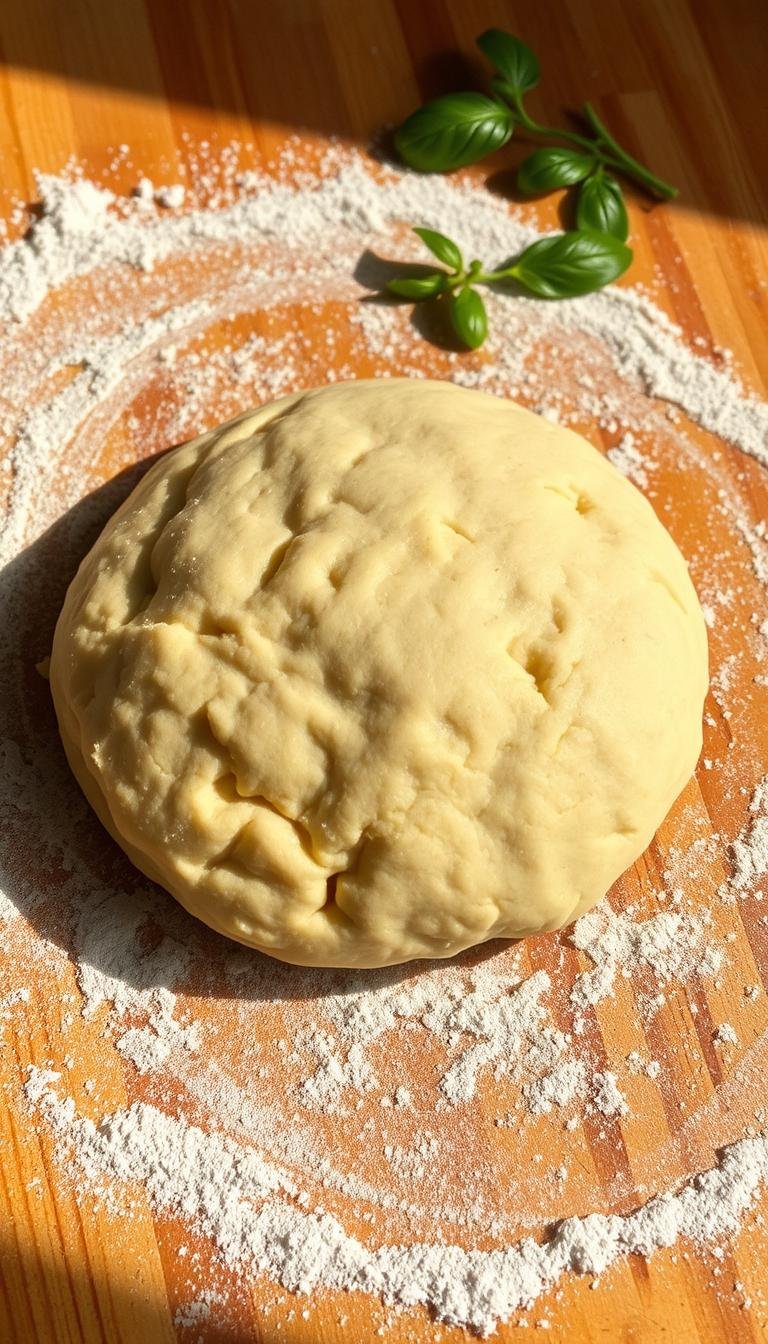25 Easy Pizza Dough Recipes for Homemade Pizza
Making homemade pizza dough from scratch can be a game-changer for pizza lovers. With the rise of home cooking, more people are turning to making their own pizza dough at home. It’s not just about saving money; it’s about creating a culinary experience that’s both fun and rewarding.
The art of crafting the perfect pizza dough from scratch involves more than just mixing flour and water. It’s about understanding the nuances of different ingredients and techniques. This comprehensive guide will walk you through 25 foolproof easy pizza recipes that cater to all skill levels, from beginners to seasoned home cooks.
Key Takeaways
- Discover the secret to making perfect homemade pizza dough every time.
- Explore a variety of easy pizza recipes suitable for different tastes and dietary needs.
- Learn tips and tricks for achieving the ideal crust texture and flavor.
- Find out how to customize your pizza dough with different ingredients and toppings.
- Master the art of making pizza dough from scratch with our step-by-step guides.
The Art of Homemade Pizza Dough
Homemade pizza dough is an art form that requires patience, practice, and a deep understanding of its fundamentals. At its core, pizza dough is about creating the perfect balance between crust, sauce, cheese, and toppings. The science behind pizza dough involves gluten development, which affects the dough’s texture and structure. Proper fermentation is crucial for developing complex flavors and achieving the ideal rise.
The historical significance of pizza dough varies across cultures and regions, from its origins in Naples to its evolution in America. Different hydration levels significantly affect dough consistency, and understanding this is key to creating a great pizza crust. Temperature and environment also play critical roles in dough development.
To master homemade pizza dough, consider the following key factors:
- Gluten development for the right texture
- Proper fermentation for complex flavors
- Hydration levels for dough consistency
- Temperature and environment control
By focusing on these elements, you can achieve a crust that’s both crispy and chewy, with a flavor that’s rich and authentic.
With practice and patience, anyone can become proficient in the art of homemade pizza dough, elevating their homemade pizzas to the next level.
Essential Ingredients and Equipment for Perfect Pizza Dough
The foundation of great homemade pizza lies in understanding the essential ingredients and tools required. Making pizza dough is not just about mixing ingredients together; it’s about selecting the right components and utilizing the appropriate equipment to achieve the perfect crust.
Basic Ingredients Every Pizza Dough Needs
The basic ingredients for pizza dough include flour, yeast, salt, water, and olive oil. Flour is the backbone of pizza dough, with different types such as ’00’ flour, bread flour, and all-purpose flour offering varying textures and flavors. ’00’ flour produces a tender crust, while bread flour gives a chewier texture. Yeast is crucial for fermentation, with active dry and instant yeast being the most common types. Salt enhances flavor and aids in gluten development, while water hydrates the dough. Olive oil adds flavor and helps with dough texture.
| Ingredient | Purpose |
|---|---|
| Flour | Provides structure and texture |
| Yeast | Facilitates fermentation |
| Salt | Enhances flavor and aids gluten development |
Must-Have Tools for Pizza Dough Making
To make pizza dough, you’ll need a few essential tools. A mixing bowl is necessary for combining ingredients, while a dough scraper helps in handling the dough. A pizza stone or steel is crucial for achieving a crispy crust, as it absorbs moisture and distributes heat evenly. A pizza peel is handy for transferring the dough to the oven. For those without specialized equipment, alternatives such as a baking sheet can be used.

Mastering Pizza Dough Techniques
To create exceptional homemade pizza, one must master the art of pizza dough techniques. This involves understanding the intricacies of kneading and proofing, two critical processes that transform simple ingredients into a delicious, crispy crust.
Kneading Methods for Different Dough Types
Kneading is a crucial step in developing gluten, which gives pizza dough its structure and texture. Different dough types require different kneading methods. For instance, hand kneading is ideal for small batches and allows for a more personal touch, while stand mixer methods are better suited for larger quantities and can save time. No-knead techniques, on the other hand, are perfect for those who prefer a more hands-off approach. The window pane test is a useful indicator of properly developed gluten.

Proofing and Resting Your Dough
Proofing and resting are essential for allowing the dough to ferment and develop flavor. The science of fermentation involves yeast converting sugars into carbon dioxide, causing the dough to rise. Both room temperature and cold fermentation methods have their advantages. Room temperature proofing is faster, while cold fermentation allows for a more complex flavor development. Timing and temperature are critical factors in achieving the perfect proof.
25 Easy Pizza Dough Recipes for Homemade Pizza
Exploring the world of homemade pizza, we present 25 easy pizza dough recipes to elevate your culinary experience. From traditional styles to innovative variations, these recipes cater to different tastes and dietary needs, ensuring that everyone can enjoy the perfect homemade pizza.
Classic Pizza Dough Recipes
Classic pizza dough recipes form the foundation of many beloved pizza styles. These traditional recipes have been perfected over time, offering a delicious starting point for any pizza enthusiast.
1. Traditional Neapolitan Pizza Dough
Neapolitan pizza dough is known for its soft center and crispy crust. To make it, you’ll need 2 cups of warm water, 2 teaspoons of active dry yeast, 3 tablespoons of olive oil, 1 teaspoon of salt, and 4 cups of all-purpose flour. Mix the ingredients, knead for 10 minutes, and let it rise for 1-2 hours.
Tips: Use a pizza stone in a preheated oven at 500°F (260°C) for an authentic Neapolitan crust.
2. New York-Style Thin Crust Pizza Dough
New York-style pizza is famous for its thin crust and foldable slices. The dough requires 1 cup of warm water, 1 teaspoon of sugar, 2 teaspoons of active dry yeast, 3 cups of all-purpose flour, 1 teaspoon of salt, and 2 tablespoons of olive oil. Mix and knead the dough for 10 minutes, then let it rise for 1 hour.
Tips: Stretch the dough thinly and bake on a preheated stone at 550°F (290°C) for a crispy crust.
| Recipe | Rise Time | Bake Temperature |
|---|---|---|
| Neapolitan | 1-2 hours | 500°F (260°C) |
| New York-Style | 1 hour | 550°F (290°C) |
Quick and Easy Pizza Dough Recipes
For those short on time, quick pizza dough recipes are a lifesaver. These recipes offer shortcuts without compromising on flavor.
6. 30-Minute No-Rise Pizza Dough
This no-rise dough is perfect for busy weeknights. Mix 1 cup of warm water, 1 teaspoon of sugar, 1 teaspoon of active dry yeast, 2 cups of all-purpose flour, and 1 teaspoon of salt. Knead for 5 minutes and shape immediately.
Tips: Bake on a preheated baking sheet at 425°F (220°C) for 12-15 minutes.

Whole Grain and Healthy Pizza Dough Recipes
Whole grain pizza dough recipes offer a nutritious alternative to traditional white flour dough. These recipes incorporate various whole grains and healthy ingredients.
10. Whole Wheat Pizza Dough
Whole wheat dough is made with 1 cup of warm water, 1 teaspoon of sugar, 1 teaspoon of active dry yeast, 2 cups of whole wheat flour, and 1 teaspoon of salt. Mix and knead for 10 minutes, then let it rise for 1 hour.
Tips: Add a tablespoon of honey for a sweeter flavor and better browning.
Specialty Diet Pizza Dough Recipes
For those with dietary restrictions, specialty diet pizza dough recipes provide delicious alternatives.
14. Gluten-Free Pizza Dough
Gluten-free dough is made with 1 cup of warm water, 1 teaspoon of sugar, 1 teaspoon of gluten-free yeast, 2 cups of gluten-free flour blend, and 1 teaspoon of salt. Mix and knead gently, then let it rise for 1 hour.
Tips: Use a gluten-free flour blend that contains xanthan gum for better texture.
Gourmet and Flavored Pizza Dough Recipes
Gourmet pizza dough recipes add unique flavors and ingredients to elevate your homemade pizza.
19. Sourdough Pizza Crust
Sourdough pizza crust uses a natural starter instead of commercial yeast. Mix 1 cup of sourdough starter, 2 cups of flour, and 1 teaspoon of salt. Knead for 10 minutes and let it rise for 4-6 hours.
Tips: Use a sourdough starter that’s been fed regularly for the best flavor.
Cooking Methods for Perfect Pizza Crust
The journey to a perfectly cooked pizza crust involves understanding different cooking techniques. Achieving a crust that’s crispy on the outside and tender on the inside can be accomplished through various methods, each with its unique benefits.
Oven Baking Techniques
Oven baking is a popular method for cooking pizza dough, offering a controlled environment for achieving the perfect crust. To maximize your home oven’s potential, preheating is crucial. Use a pizza stone or steel to enhance crust crispiness. Creating steam in the oven helps develop the crust’s texture and flavor.
- Preheat your oven to its highest temperature setting.
- Use a pizza stone or steel for better crust development.
- Create steam by throwing ice into the oven or using a steam generator.
Cast Iron Skillet Method
The cast iron skillet method is a versatile technique that can produce a crispy crust without specialized pizza equipment. Preheating the skillet is essential for achieving a well-cooked crust. Carefully transfer your dough to the preheated skillet and cook until the crust is golden.
“Cast iron skillets retain heat exceptionally well, making them ideal for cooking pizza.” –
Grilling Your Pizza Dough
Grilling pizza dough adds a smoky flavor and can achieve a perfectly charred crust. For direct grilling, place the dough on the grill and cook for a few minutes on each side. For indirect grilling, cook the dough on one side, then finish with toppings on the other side of the grill.
- Preheat your grill to medium-high heat.
- Oil the grates to prevent sticking.
- Cook the dough for 2-3 minutes on each side for direct grilling.
Troubleshooting Common Pizza Dough Problems
Making pizza dough can be a complex process, and even experienced pizza enthusiasts encounter issues from time to time. From sticky dough to dough that refuses to rise, this section will guide you through troubleshooting common pizza dough problems, helping you to identify the causes and apply practical solutions.
Fixing Sticky or Dry Dough
One of the most common issues pizza makers face is dealing with dough that is either too sticky or too dry. The key to resolving this issue lies in understanding the dough’s hydration level and making adjustments accordingly.
For sticky dough, gradually add small amounts of flour while gently kneading until you achieve the desired consistency. Be cautious not to overwork the dough, as this can lead to a tough crust.
On the other hand, dry dough can be salvaged by incorporating more water or olive oil. However, it’s essential to add liquids gradually to avoid overhydrating the dough.

Environmental factors such as temperature and humidity can also affect dough consistency. For instance, in humid environments, you may need to adjust your recipe by adding more flour to compensate for the excess moisture.
| Dough Condition | Cause | Solution |
|---|---|---|
| Sticky Dough | Excess moisture | Add flour gradually while kneading |
| Dry Dough | Insufficient hydration | Add water or olive oil gradually |
Solutions for Dough That Won’t Rise
A common issue that can be frustrating is when the dough fails to rise. This problem is often related to yeast activity or environmental conditions.
First, check the expiration date of your yeast and ensure that you’re using the correct water temperature for activation. Typically, yeast thrives in warm water between 100°F and 110°F.
“Yeast is a living organism, and its activity is crucial for the dough to rise. Ensuring the right conditions for yeast activation is key to a successful rise.”
If your yeast is active, consider the proofing environment. A cold or drafty area can slow down or halt the rising process. Try creating a warmer, draft-free environment to help the dough rise.
- Check yeast expiration date
- Use correct water temperature
- Create a warm, draft-free proofing environment
Storing and Freezing Pizza Dough
Proper storage is key to maintaining the quality of your homemade pizza dough. Whether you’re looking to prepare dough in advance or save leftovers, understanding the best storage methods is crucial.
Best Practices for Refrigerating Dough
Refrigerating your pizza dough allows for a slower rise, enhancing the flavor through a process known as cold fermentation. To refrigerate dough effectively, place it in a lightly oiled bowl, cover it with plastic wrap or a damp towel, and store it in the refrigerator. The maximum refrigeration time varies depending on the dough type, but generally, it’s best used within 24 to 48 hours. Check the dough periodically to ensure it hasn’t over-proofed or dried out.
How to Freeze and Thaw Pizza Dough
For longer storage, freezing is an excellent option. Divide the dough into portions suitable for individual pizzas, wrap each portion tightly in plastic wrap or aluminum foil, and place them in a freezer-safe bag. When you’re ready to use the dough, you can thaw it in the refrigerator, at room temperature, or quickly in the microwave. After thawing, allow the dough to rest for a few minutes before shaping. This method ensures you have make-ahead pizza dough ready for quick meals.
Conclusion
With the techniques and recipes outlined in this article, you’re well on your way to achieving homemade pizza tips that will elevate your pizza game. From basic dough-making techniques to more advanced recipes, the progression is designed to help you build pizza dough mastery and confidence in the kitchen.
The 25 easy pizza dough recipes provided cater to various tastes, dietary needs, and cooking styles, ensuring that everyone can find a recipe that suits their preferences. As you gain pizza making confidence, you’ll be able to experiment with different ingredients and techniques, creating personalized pizzas that are sure to impress family and friends.
Pizza making is not just about the end product; it’s also about the process. It’s a fun and interactive activity that can be enjoyed with loved ones, making it a great way to spend quality time together. So, don’t be discouraged if your first attempts don’t turn out as expected – with practice, you’ll get better, and the journey will be worth it.
Now that you’ve got the tools and knowledge, it’s time to start your pizza-making journey. Choose a recipe that excites you, and get started! As you continue to explore the world of homemade pizza, you can return to this article as a reference, expanding your repertoire and refining your skills.






